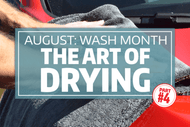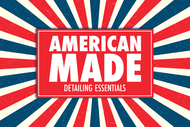
The Right Techniques & Products to Dry Your Car for a Spotless Finish
Welcome to the final installment of the Autogeek August Car Wash Series! We've journeyed from selecting the right Car Wash Pro

Welcome back to the Autogeek August Car Wash Series! In Part 1, we covered choosing the right car wash products, and in Part 2, we mastered the Two-Bucket Method for a scratch-free, swirl-free shine.

Welcome back to the Autogeek August Car Wash Series! Last week, in Part 1, we discussed the importance of choosing the right car wash products for a flawless start. This week, we're diving into the co

Welcome to the Autogeek August Car Wash Series, your ultimate guide to achieving a professional, swirl-free shine right in your driveway! Over the next four weeks, we'll break down the proper steps to

At Autogeek.net, we love a good success story, especially when it involves a passion for detailing and a stunning show car. Today, we're shining the spotlight on Lisa and Michael, the proud owners of

This 4th of July week, as we celebrate the spirit of independence, there's no better way to show your patriotism than by supporting American-made products and the businesses that champion them. At Aut

Calling all car care fanatics and detailing devotees! We've got some exciting news that's been brewing behind the scenes, and we're thrilled to finally share it with you. Remember the buzz, the shine,

Father's Day is just around the corner, and the perennial question arises: What to get dad for Father's Day?
Look no further! Autogeek.com is a treasure trove of gifts for anyone passionate about car








